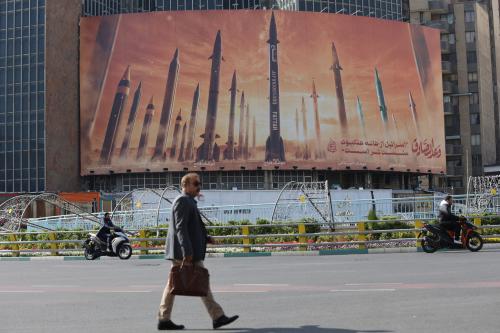The angry outbursts in response to a video defaming the prophet Muhammad are a reminder of the power of images that are in some way disturbing or unsettling. Such power, however, is not limited only to what influences hotheads in Benghazi or Lahore. It can frequently be seen in our own society. It influences the course of debate on many public issues. By “images” I do not mean just videos, cartoons, or other graphic or electronic representations. I mean at least as much the ability to picture in a person’s own mind some specific, vividly colored and unpleasant happening.
NPR broadcast on Thursday a segment that conveyed some of the relevant research by psychologists. The story focused on why we might in some situations apply a rational cost-benefit approach but in other circumstances that are only slightly different we make a more emotional, unthinking determination that a certain course of action is simply right or wrong. The difference, the psychologists tell us, is whether the words that describe a particular circumstance conjure up a vivid image in our minds. Our brains are wired to respond to pictures. With such a picture—especially an ugly and disturbing picture—we are more likely to respond simply and emotionally rather than thinking through costs and benefits.
An example given in the piece is a hypothetical opportunity to affect an accident involving a runaway trolley. Without intervention the trolley will run over five people on the track. You can prevent this from happening by throwing a switch that will divert the trolley onto a side track, where it will kill one other person instead. In a different scenario you can instead intervene by pushing off a footbridge and onto the main track a person who is sufficiently large and carrying a big enough backpack that when he gets hit the trolley will stop. The moral issue should be the same; in each scenario the choice involves taking an action that will knowingly kill one identifiable person to save five others. But the responses of people who are given these hypothetical choices are different; most people in the first situation would throw the switch, but most people in the second situation would not throw the man off the bridge. The second action induces a more vivid and disturbing mental picture than the first.
The NPR report mentions a type of comparison that brings us closer to real security issues. Think about a terrorist using an ax to slaughter people on a bus, and then think about a missile fired from an airborne drone. “If you learn about these events from television or from pictures in a newspaper,” asks one of the psychologists, “which one would you judge as more horrible? The person with the ax that killed maybe two people but the scene looks horrible and extremely violent, or the picture of the drone that killed 100 people but looks relatively clean and nice?” The good news is that the absence of an obviously disturbing image involving the action of the drone means we are likely to apply real thinking and a calculation of costs and benefits, rather than just emotion, in assessing it. The bad news is that we are inconsistent in the standards we apply to different actions, with those standards being determined more by the blatant bloodiness of any images that come to us or that our own minds draw than by the actual damage that each action inflicts.



Commentary
Op-edThe Public Psychology of Disturbing Images
September 20, 2012